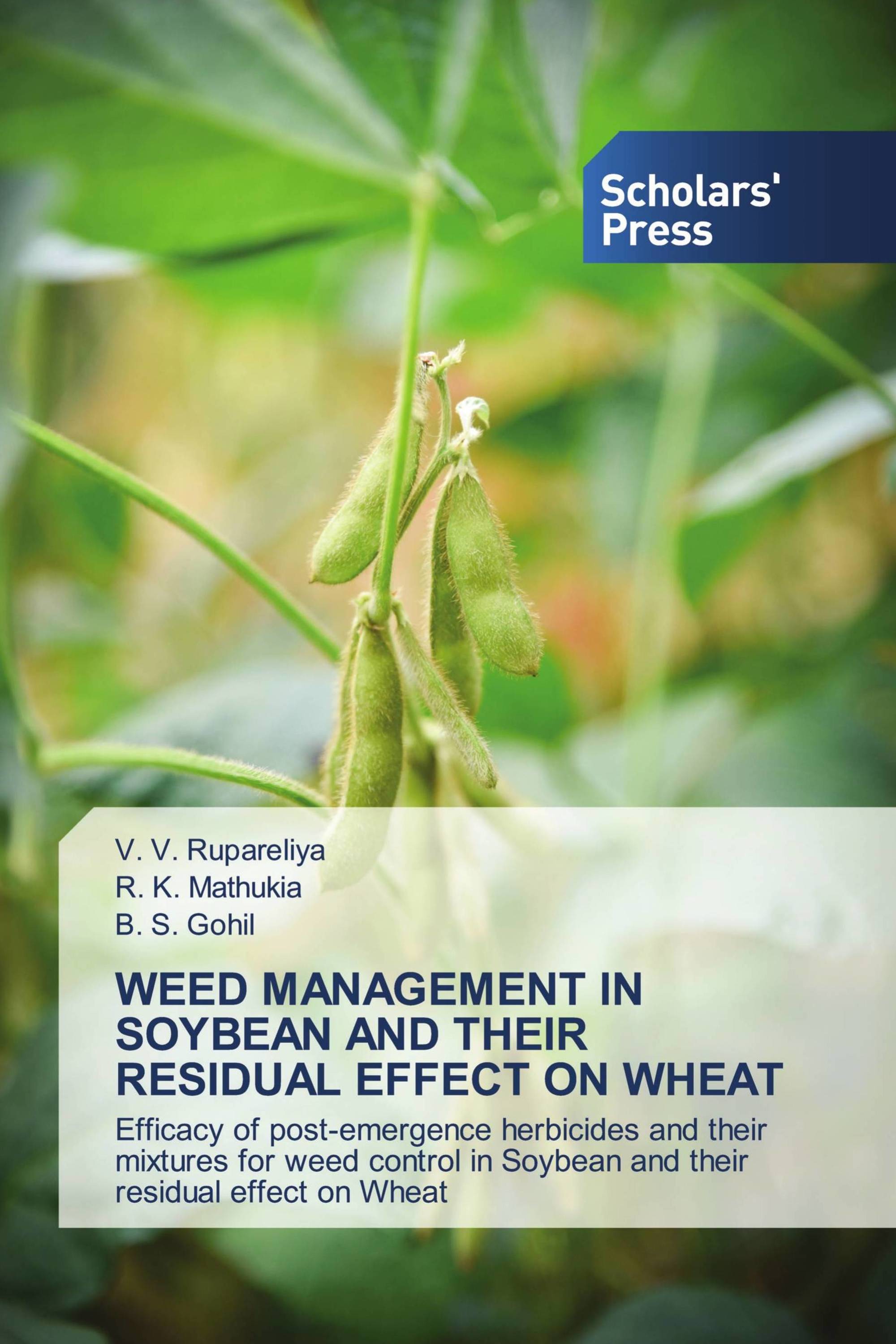WEED MANAGEMENT IN SOYBEAN AND THEIR RESIDUAL EFFECT ON WHEAT
Efficacy of post-emergence herbicides and their mixtures for weed control in Soybean and their residual effect on Wheat
€ 114,90
This book provides the exhaustive information to weed management in soybean require special attention. Soybean is mostly grown in kharif season and suffers from severe weed-crop competition due to continuous rain, which does not permit hand weeding and interculturing operation timely resulting in yield loss to the tune of 30-80%. However, the crop suffers severely due to early competitive stress of weeds. If farmers skip application of pre-emergence or pre-plant incorporated herbicides due to one or the other reason, require alternative post-emergent herbicides for managing weeds. Mixing two or more herbicides each effective against different weed flora and each with different mechanisms of action are quite helpful in reducing the chance of shift in weed flora and the problem of evolution of herbicide resistance. Wheat is the important succeeding crop, grown after soybean in Gujarat. The wheat has differential sensitivity to different herbicides. Hence, a study on the residual effects of herbicide on the succeeding crop is important.
Book Details: |
|
|
ISBN-13: |
978-613-8-96290-8 |
|
ISBN-10: |
6138962907 |
|
EAN: |
9786138962908 |
|
Book language: |
English |
|
By (author) : |
V. V. Rupareliya |
|
Number of pages: |
460 |
|
Published on: |
2021-11-08 |
|
Category: |
Agriculture, horticulture, forestry, fishery, nutrition |
